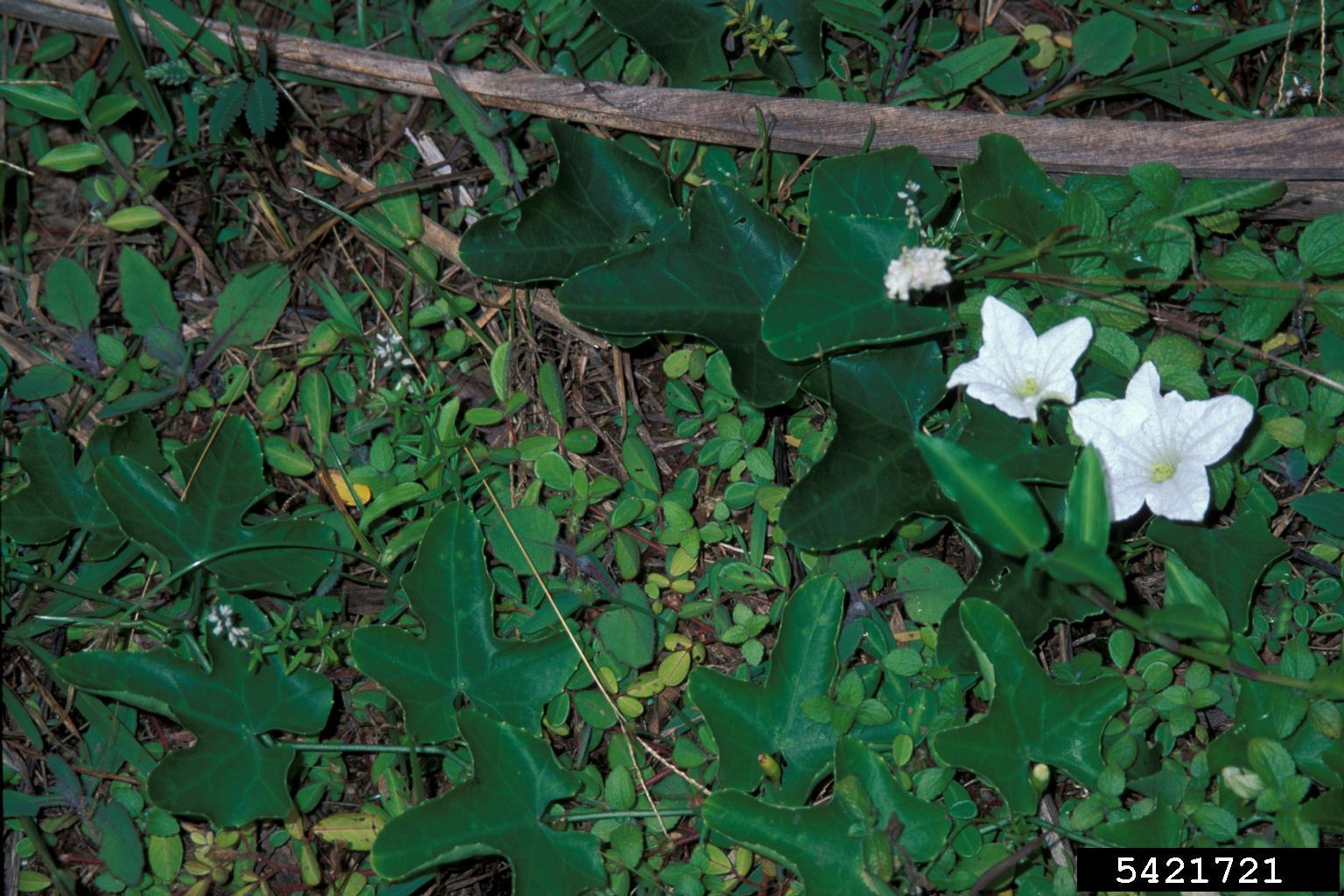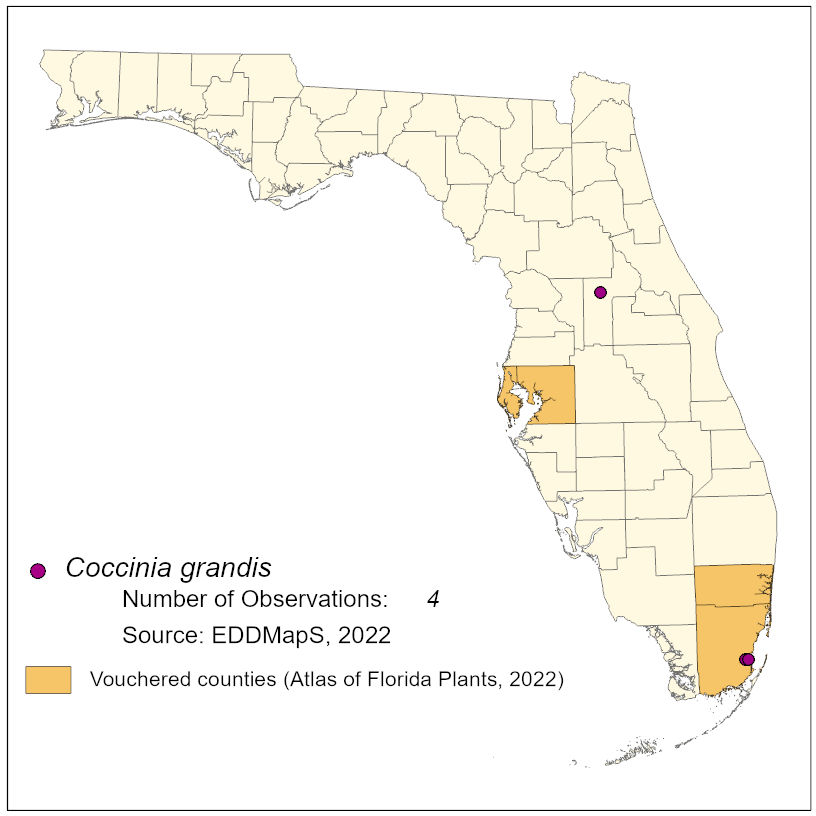Common Name: ivy gourd
Family: Curcurbitaceae
Common Synonyms: none
USDA Hardiness Zone: 9b-11
Growth Habit: Vine
Origin: Africa and Asia
FISC Category: -
FDACS Listed Noxious Weed: No
Introduction Date: Earliest Florida specimen vouchered in 1908
IFAS Assessment:

Perennial herbaceous vine to 2.7 m long. Stems annually produced from a tuber, glabrous with simple tendrils. Leaves alternate and simple, ovate, 5-lobed 5-9 cm, glabrous. Flowers white, 5-petaled, 3-4.5 cm long. Fruit a smooth, red berry, 2.5-6 cm long.
Hammocks
Occurs in Lee Co in residential areas. Grown for use in Asian cuisine and medicine

NA
Dave's Garden. 2014. PlantFiles: Ivy Gourd, Coccinia grandis. http://davesgarden.com/guides/pf/go/32030/. Accessed on June 20, 2014.
ISSG. 2005. Global Invasive Species Database: Coccinia grandis. http://www.issg.org/database/species/ecology.asp?si=348. Accessed on June 24, 2014.
University of Georgia - Center for Invasive Species and Ecosystem Health. 2013. BugwoodWiki: Coccinia grandis. http://wiki.bugwood.org/Coccinia_grandis. Accessed on June 24, 2014.